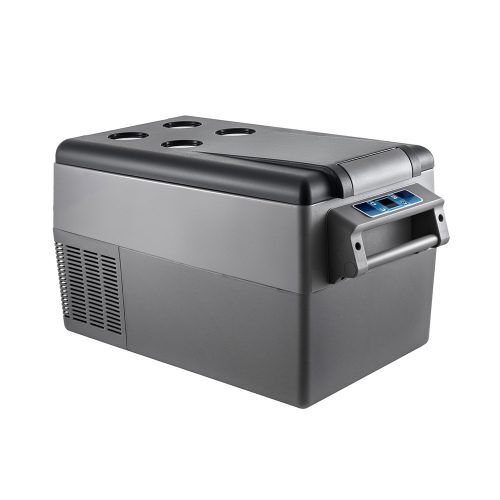Beverage coolers and refrigerators have several variations and similarities, each within the approach they appear and therefore the manner within which they operate. because the prospect of selecting simply the correct device for you and your family will typically be a frightening expertise.
At first look, each portable cooler and a white good could seem to be terribly alike however they’re really designed and designed to fulfill completely different functions.
When fitting your man cave or home bar, you’ll solely have the budget and/or area to accommodate only 1 of the 2 cooling devices. as long as drawbacks, what one do you have to choose?
This guide can assist you to answer that question. Below we are going to cowl the assorted options found on each potable cooler and refrigerator, and justify the variations and similarities between the 2.
In this finish, we have a tendency to hope this may assist you to build a lot of au courant buying calls and permit you to urge the merchandise that the majority meets your desires.
In this article, we see the major difference between a refrigerator and a cooler.
The Doors:
The first obvious distinction between a nutrient cooler and white goods is the door you may notice on every device. The door of white goods is sometimes opaque and a product of insulation with a vacuum intermediate and Al coating.
This style setup is intentional, done to assist the white goods to maintain the radical cool temperatures—temperatures that approach the temperature reduction mark.
A nutrient cooler, on the opposite hand, sometimes comes equipped with a UV-resistant clear glass door. this enables you to examine what’s within the cooler while not truly having to open it.
This comes in terribly handy if you’re throwing a celebration or looking at the massive game with the blokes in your man cave. That’s as a result of your guests don’t need to keep guesswork what you have got for them, going you embarrassed if you don’t have their request—they simply create their orders from what they’ll see.
The ability to examine the drinks in an exceedingly nutrient cooler conjointly sets the mood for any party. additionally, the doors of nutrient coolers have special hinges that forestall the swinging of the door to avoid slamming on the cupboard. This conjointly makes the doors of the nutrient cooler quieter than the white goods.
Some models of nutrient coolers have reverse gap doors that make it doable for you to alternate the direction the door opens. this could be available in handy throughout parties or once there’s an oversized crowd visiting your home.
You can opt for the direction to open the door so you don’t hinder traffic or slam the door into someone’s face.
Installation:
When you purchase white goods, the manual can typically tell you to permit many open areas on the edges and back of the unit for correct ventilation. this massive quantity of area is actually not necessary for a drinkable cooler.
When you purchase a drinkable cooler you really have 2 choices once it involves the installation of the unit: you’ll be able to enable it to be a separate or standalone unit, otherwise you will build it into your cupboards or countertop—a nice possibility if you’ve got a home bar or man cave.
For the separate drinkable cooler, the installation guide can typically tell you to permit 1-inch of the area on the edges and maybe 2-3 inches at the rear of the unit for correct ventilation.
While the separate drinkable cooler and white goods each need ventilation area, refrigerators typically need way more area, which limits your choices on wherever it is placed. The constitutional drinkable cooler is sort of totally different. It is sandwiched between room cupboards while not the slightest thought of ventilation.
This is as a result of the vents on this sort of drinkable cooler ar situated at a very cheap unit.
Temperature:
Naturally, each liquid cooler and therefore the icebox is designed to supply chilly surroundings. However, the method they attain this goal differs considerably between the 2.
In fact, the holding temperature is maybe the most distinct between an icebox and a liquid cooler. An icebox is meant to possess compartments for conserving groceries, as well as meat, cheese, produce, etc.
To keep bacteria away and keep things recent, refrigerators sometimes operate at a temperature below thirty-nine degrees F. Most refrigerators don’t even have temperature management and care for one temperature.
This is why things within the icebox are usually iced over. whereas you definitely wish your drinks to be chilled, a will of brewage that’s part frozen will quickly kill the fun at any party.
Beverage coolers, on the opposite hand, have temperature management that enables you to line the temperature between thirty-nine degrees and sixty-five degrees to accommodate different types of beverages. you’ll be able to simply set the temperature by pressing the buttons with the up or down arrows.
There is conjointly a button that may permit you to change the temperature show from Gabriel Daniel Fahrenheit to Celsius and the other way around. All of this suggests you’ll be able to chill your brewage or wine to the proper temperature.
Some newer brands of liquid coolers incorporate sensible controls like alarms that buzz once the door is left open for too long or lock modes that stop folks from fixing your planned temperatures.
In some cases, you may be storing many alternative kinds of beverages. luckily, there are some liquid coolers that allow zoned cooling.
You may have 2 or perhaps 3 zones inside a liquid cooler, every having its own temperature controls. every one of the zones can go along with digital displays that assist you to observe their temperature.
This will enable you to store and chill every variety of nutrients at their suggested temperature. Here area unit of the suggested temperatures for various varieties of beverages:
- Non-alcoholic beverages – thirty degrees F to thirty-five degrees F
- Sparkling wine/Champagne – fifty-five degrees F to sixty degrees F
- White wine – forty-five degrees F to fifty-five degrees F
- Low-content alcohol – forty-five degrees F to fifty degrees F
- Red wine – sixty degrees F to sixty-eight degrees F
- High-content alcohol – fifty-five degrees F to sixty degrees F
You would in all probability want 3 to four refrigerators to be able to accomplish all of those best temperatures, forward you’ve got all the above-listed varieties of beverages to serve. On the flip aspect, if you get a nutrient cooler that provides zoned cooling, only 1 unit can satisfy.

